Tuesday 19 November 2024
What is SAP Analytics Cloud (SAC)?

Unifying Business Insights in the Cloud: SAP Analytics Cloud
SAP Analytics Cloud, commonly referred to as SAC, is the cloud data visualization tool from SAP.
Its strength? SAP Analytics Cloud combines the following functionalities in a single tool:
- Business Intelligence (BI)
- Predictive Analysis
- Planning
SAP offers a complete solution when it comes to business intelligence. Accessible online in SaaS mode, SAC is becoming increasingly important in the SAP ecosystem. Eventually, it is destined to become the BI reference tool for the SAP Cloud suite. To fully understand its importance, we will answer the following questions:
- What needs does SAC address?
- What are the main features of SAC?
- Who are SAC’s intended users?
- How much does SAC cost?
- What does the future hold for SAC?
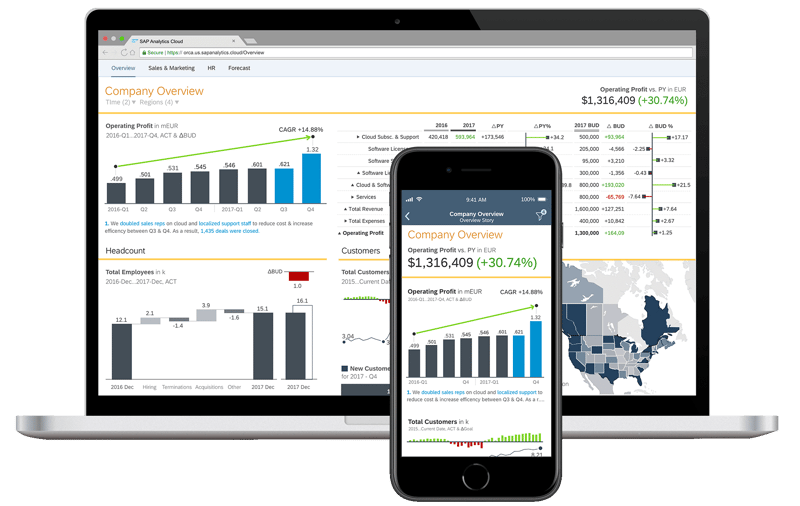
A Brief History of SAP Analytics Cloud
In 2015, in a desire to develop a « Business Planning and Consolidation (BPC) Cloud », SAP released a product called « SAP Cloud for Planning » which offered planning functionalities. The German vendor improved it by adding a BI layer for data visualization and renamed it « SAP BusinessObjects Cloud ».
To further develop the product, SAP added an additional component of predictive analytics functionalities. This made it the first tool in the BI world to cover all three aspects of data visualization, planning, and predictive analytics.
In 2017, this enhanced product was renamed to SAP Analytics Cloud (SAC).
In 2019, new functionalities were added to create « analytical applications ». These applications complement the data visualization layer.
What needs does SAC address?
SAP Analytics Cloud is a new tool in the SAP portfolio to meet the needs of data visualization in the cloud. It is delivered as an all-in-one, SaaS-based product. It covers the needs of data visualization, budget planning, and predictive analytics.
Its main function is the creation of data reports.
This data can originate from a variety of sources: real-time data captured from your business activities, budget forecast data or even thousands of lines of data formatted as an MS Excel table.
The solution is intuitive and easy to use. It allows every user to produce reports of varying complexity with complete autonomy.
SAC is positioned in the segment of analytical tools for data visualization, in the same way as the Microsoft tool, Power BI.
What are the main features of SAC?
Business Intelligence
Data Access
SAP Analytics Cloud allows data to be obtained through two methods:
- Data Import
- Direct read from the database / ERP
In the case of an import, the data source can be a file, an SAP system, an OData service or an SQL database.
In the case of a direct read, refreshed real-time data is captured, only by connecting to an SAP system (HANA, BW, BPC or other).
Data Modeling
This allows data preparation with additional features such as adding indicators, inserting formulas as well as modifying values of recovered characteristics.
Data Visualization
This feature allows you to explore and highlight your data with graphs, tables or any other graphical components.
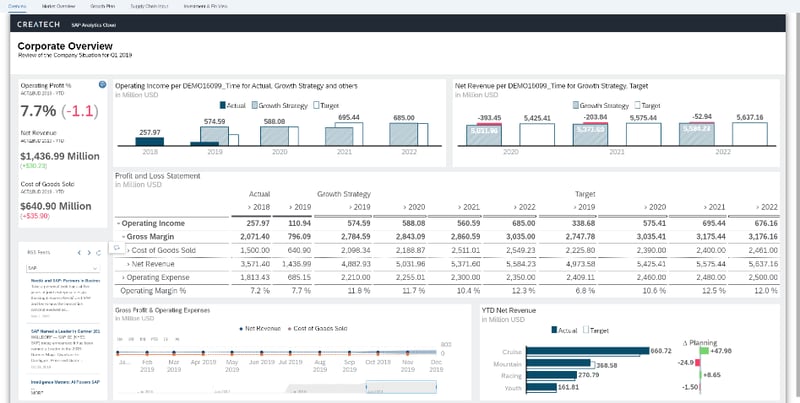
Predictive Analysis
In order to be able to highlight relevant metrics or predict future results, SAP has injected artificial intelligence innovations. A few application examples of these innovations include automated content creation via smart discovery, identification of influential characteristics, and detection of off-trend records, plus many others.
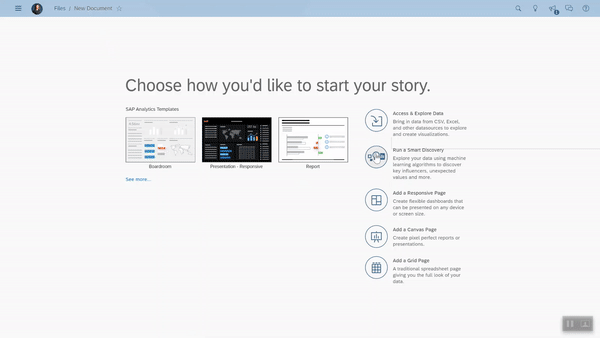
Planning
The planning section of SAC enables the combination of both your financial and your operational statements in the same tool for a complete and clear view of your current state. Budget planning versions can be created and modified from existing financial statements. The provided machine learning and predictive forecasting tools can help anticipate your financials for future dates. Also available is the popular "What If" mode for performing simulations.
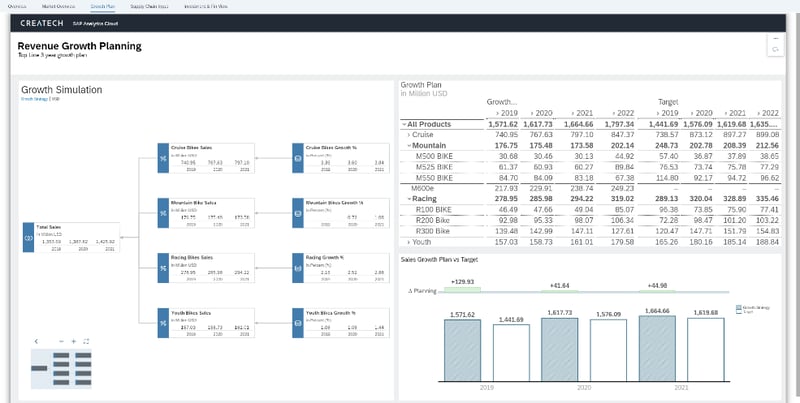
Who are SAC's intended users?
SAP Analytics Cloud is intended to be as accessible as possible: you don't need to come from the IT sector to gain control of the solution. In fact, you can easily become autonomous after a few short days of use.
These reports are designed to highlight key indicators that are representative of your business.
To fully exploit SAC, the ideal is to connect your ERP (whether it is cloud or not) as a data source. SAP has made it simple to connect to all the products in its suite. However, the solution is equally well suited to receiving data from flat files or any other data source.
Keep in mind that SAC allows mass data analysis. Therefore, by utilizing more data, this improves results, proposing more relevant highlighted key indicators.
The solution can be adapted to any business department that has sufficient data, whether it is a large company or an SME.
The reports can illustrate an overview of a company's activities providing real time savings for the executive. The reports can just as easily highlight key detailed indicators such as the number of customer sales orders or deliveries, for individuals who manage these activities in real time.
How much does SAP Analytics Cloud cost?
SAP offers several pricing options for licences:
- Business Intelligence license: to create connections, data models, or reports
- Planning license: In addition to the possibilities identified above with a BI license, you can also take full advantage of additional Planning mode features. This includes, integration with SAP BPC where you can create budget versions and currency conversions to name a few.
SAP also offers the opportunity to try the tool free of charge for 30 days. The free access offers many features which provides an insight into the capabilities of SAP Analytics Cloud. For more details, refer to SAP's pricing offers.
What does the future hold for SAC?
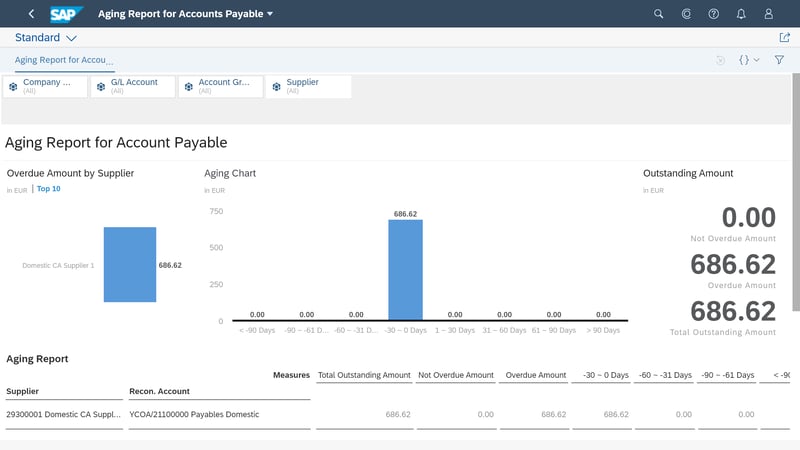
With regards to SAP On-Premise solutions SAP BusinessObjects remains the preferred choice, although hybrid solutions with an On-Premise ERP and cloud-based solution are increasingly available.
For planning
SAP's strategy is to prioritize cloud solutions for planning tools. The use of SAP Analytics Cloud is recommended for planning without the need for legal consolidations.
In addition, its collaborative planning tools provide tangible added value for updating forecasts in each division of the company, and its integration with SAP S/4HANA allows for easy data amalgamation.
However, for customers using the On-Premise solution with SAP BPC, an extension is possible with SAC. It is even recommended for improved data utilization.
In short, SAP is promoting SAP Analytics Cloud across all offered segments; whether it's reporting in its new solutions or planning by integrating with the other tools in its suite. With SAP's focus on continuing to enhance the tool, SAC is positioned for a very promising future.
Related topics



